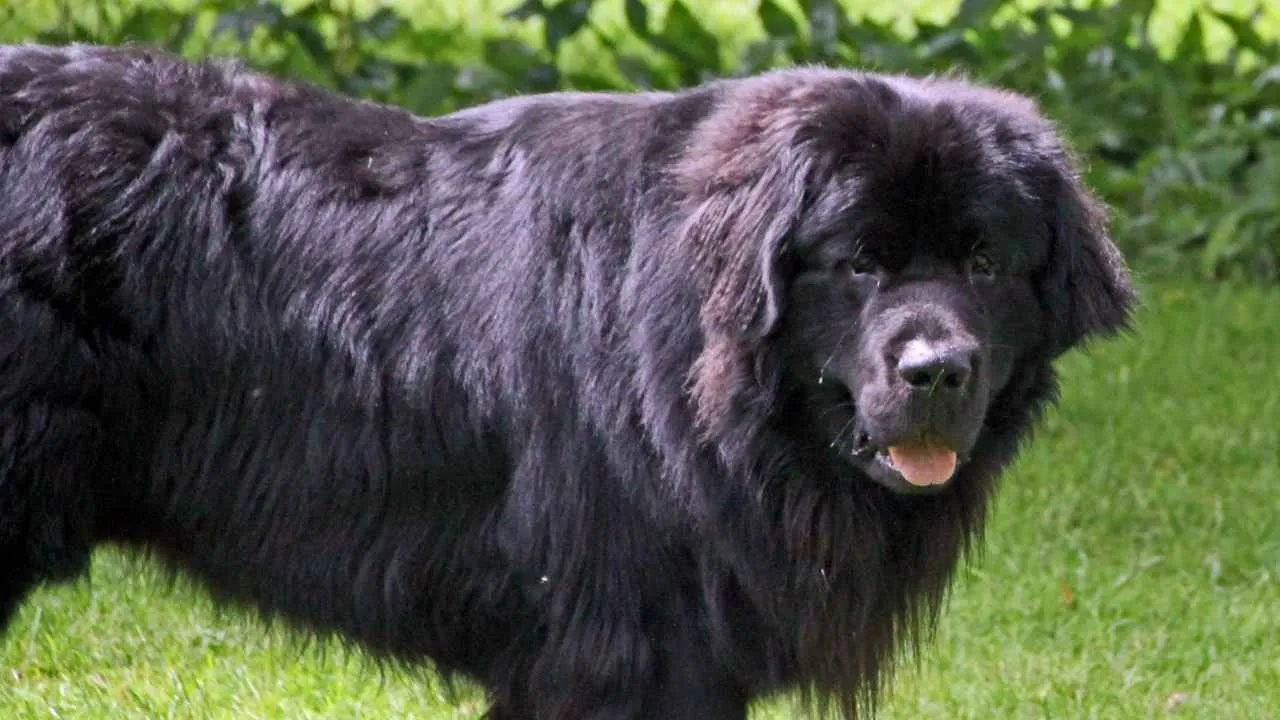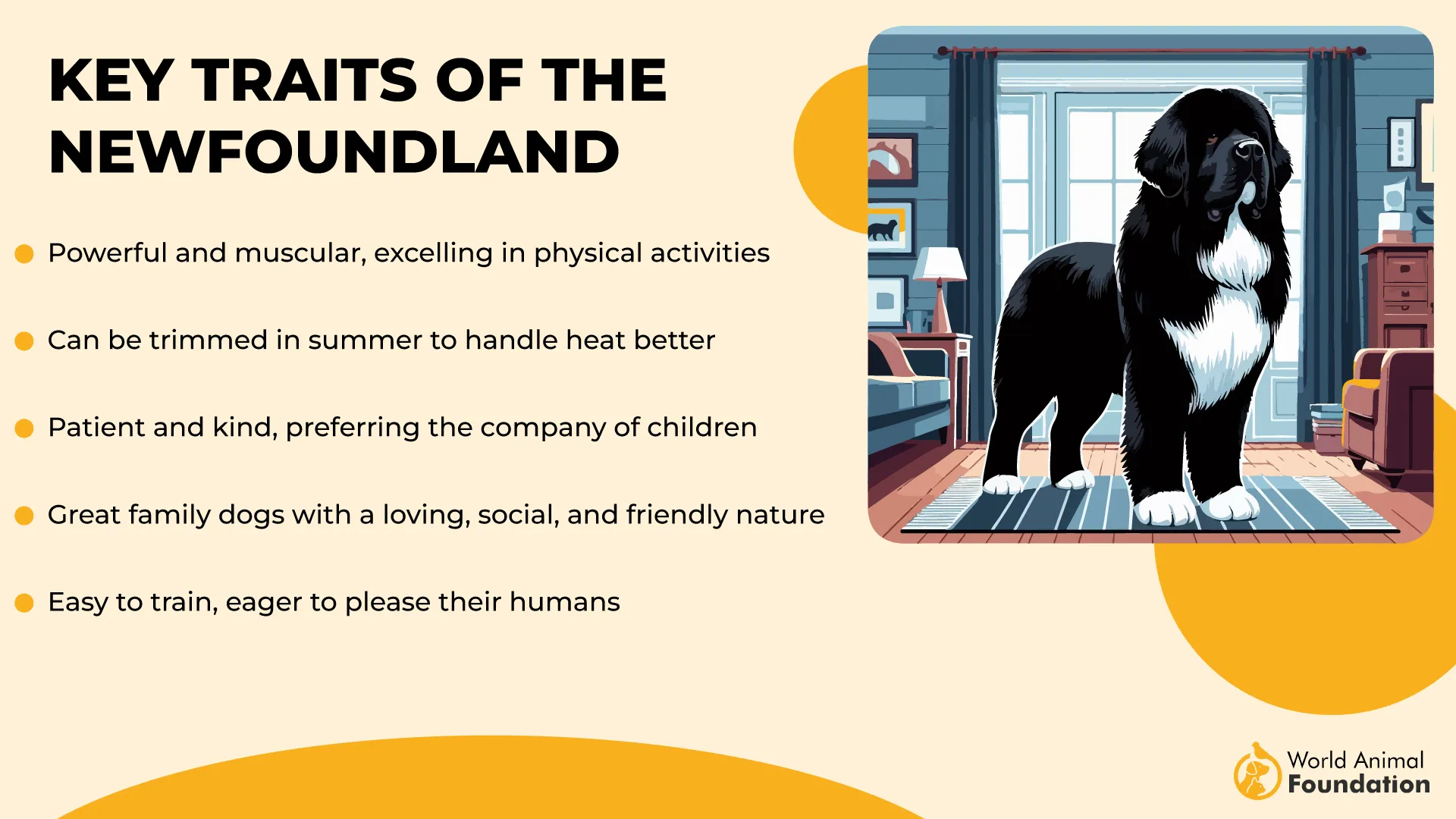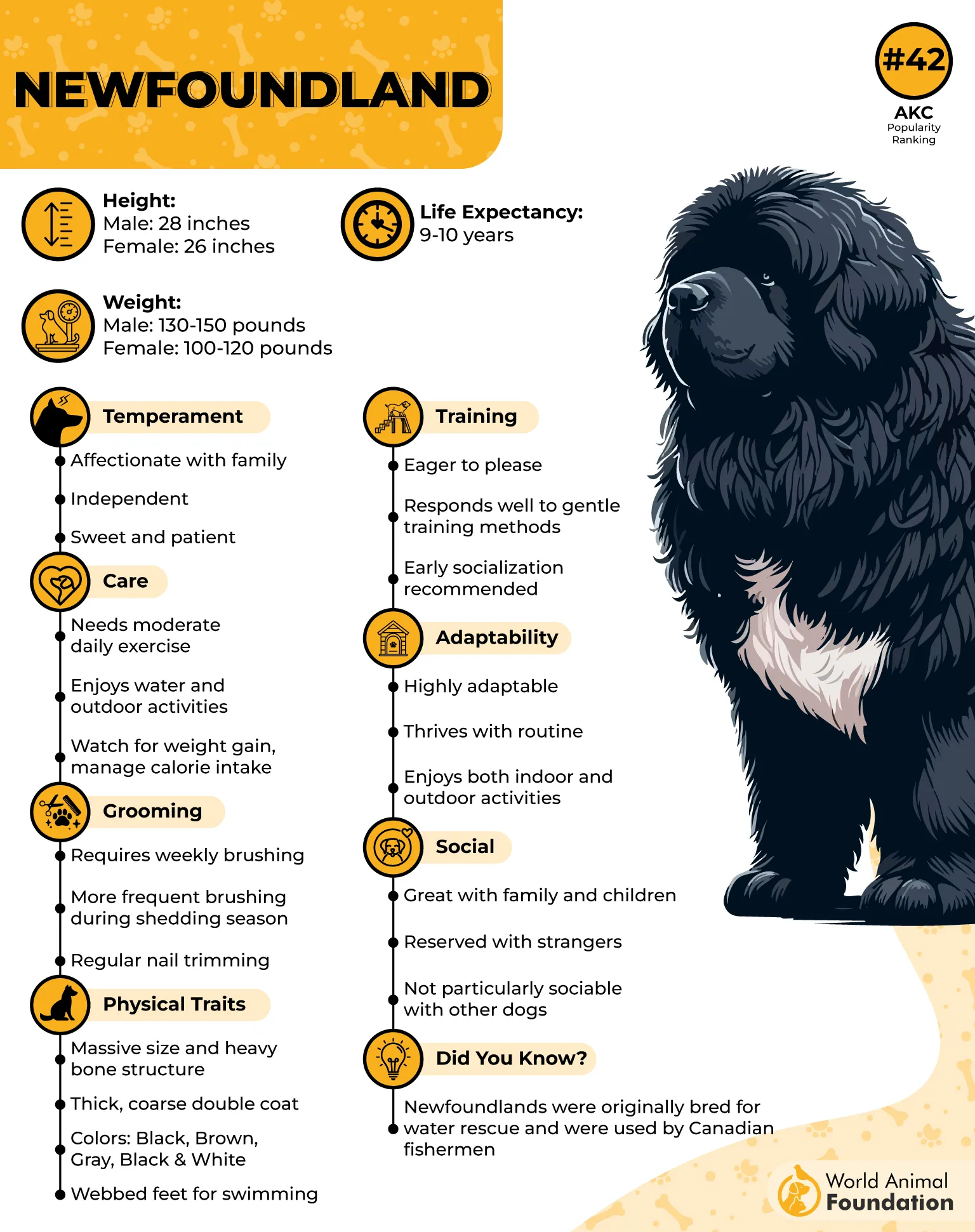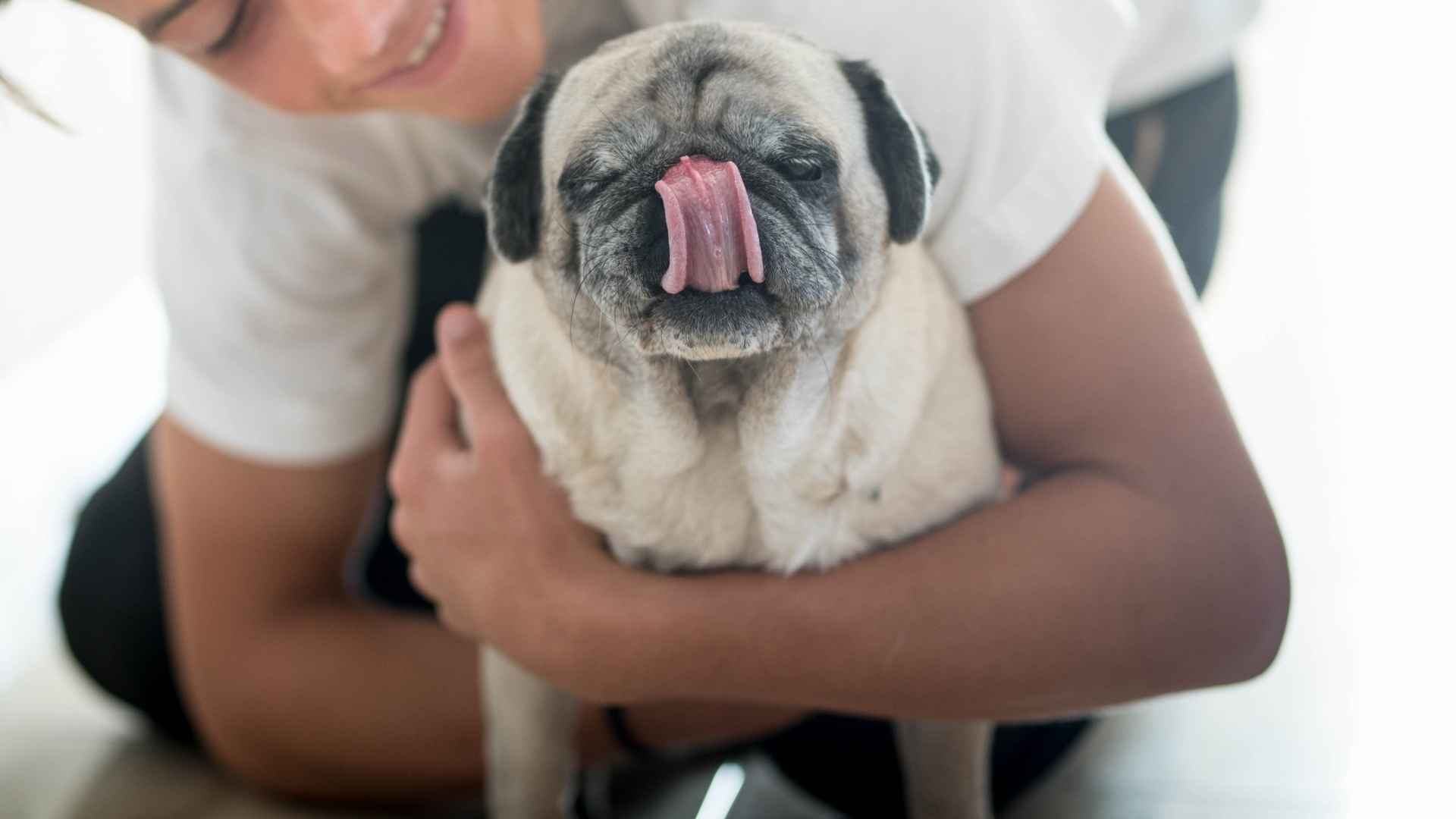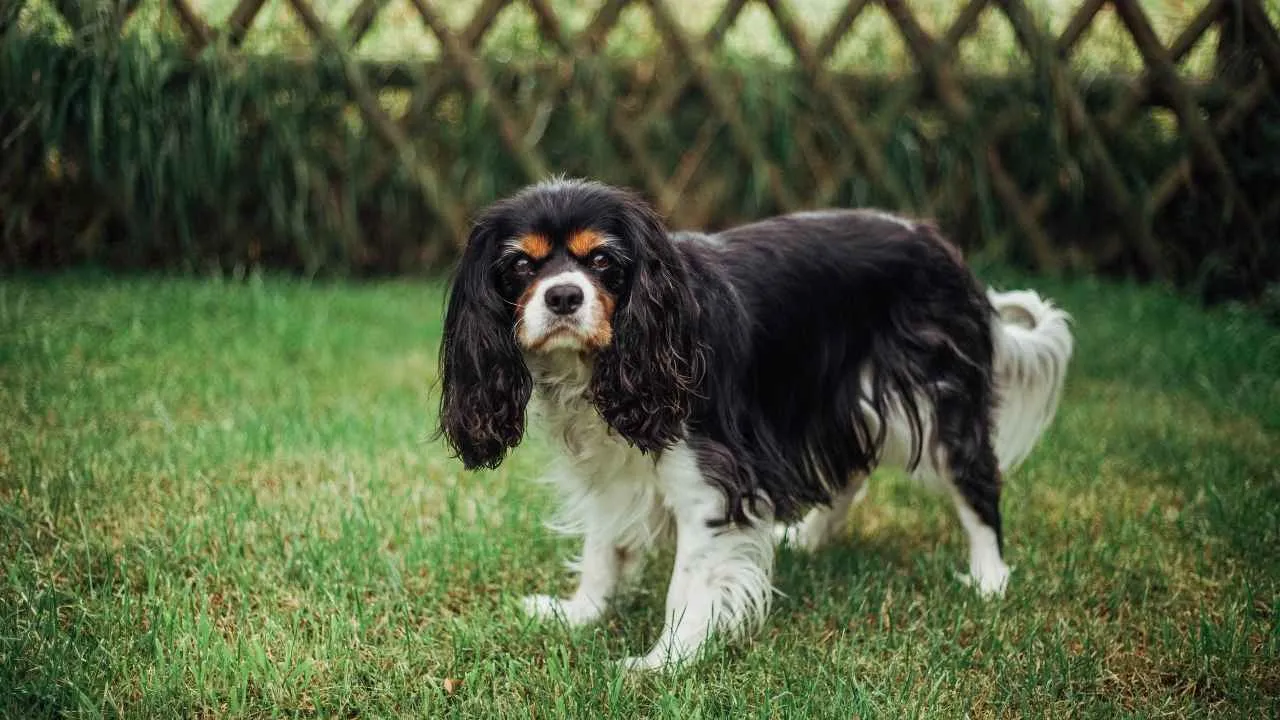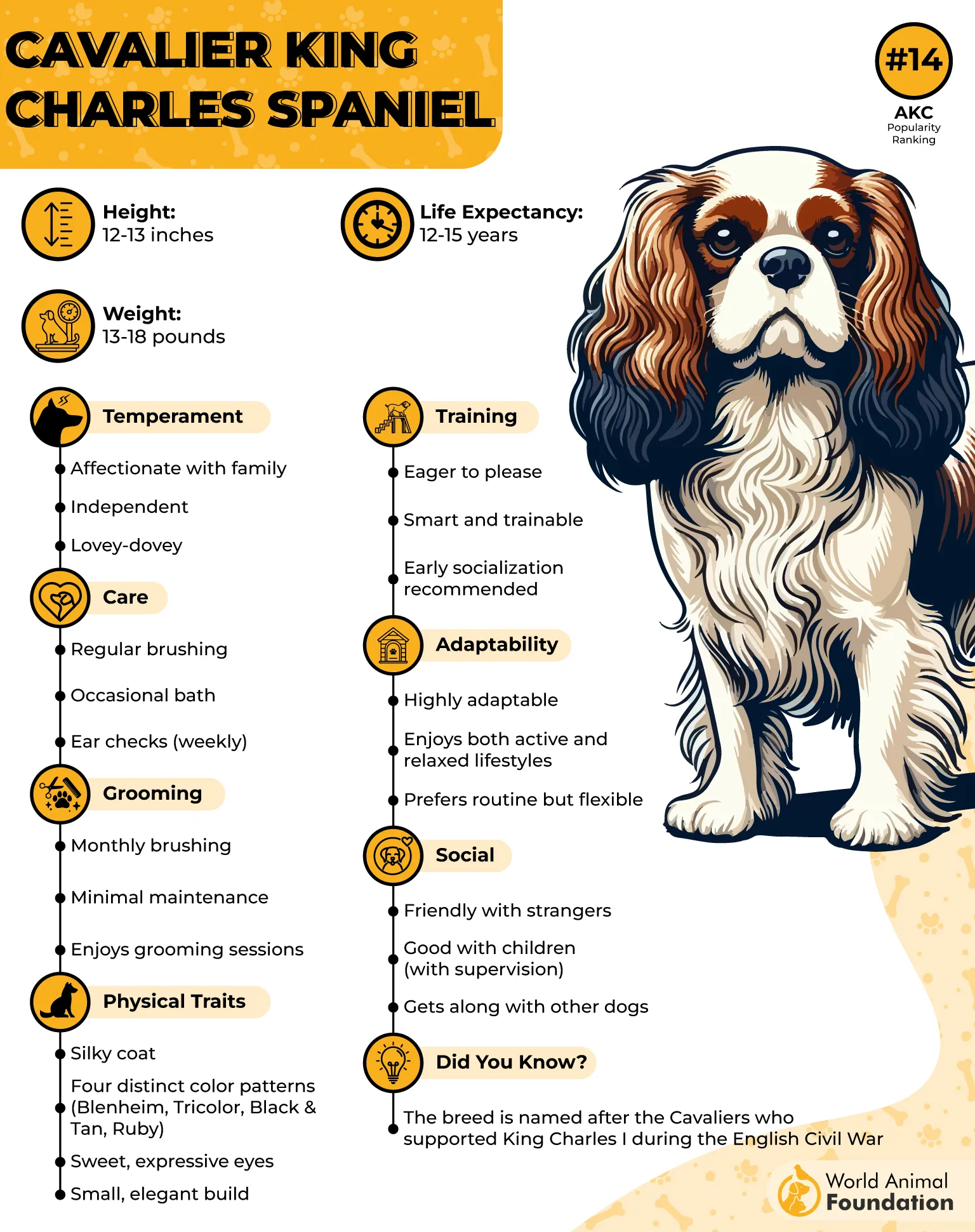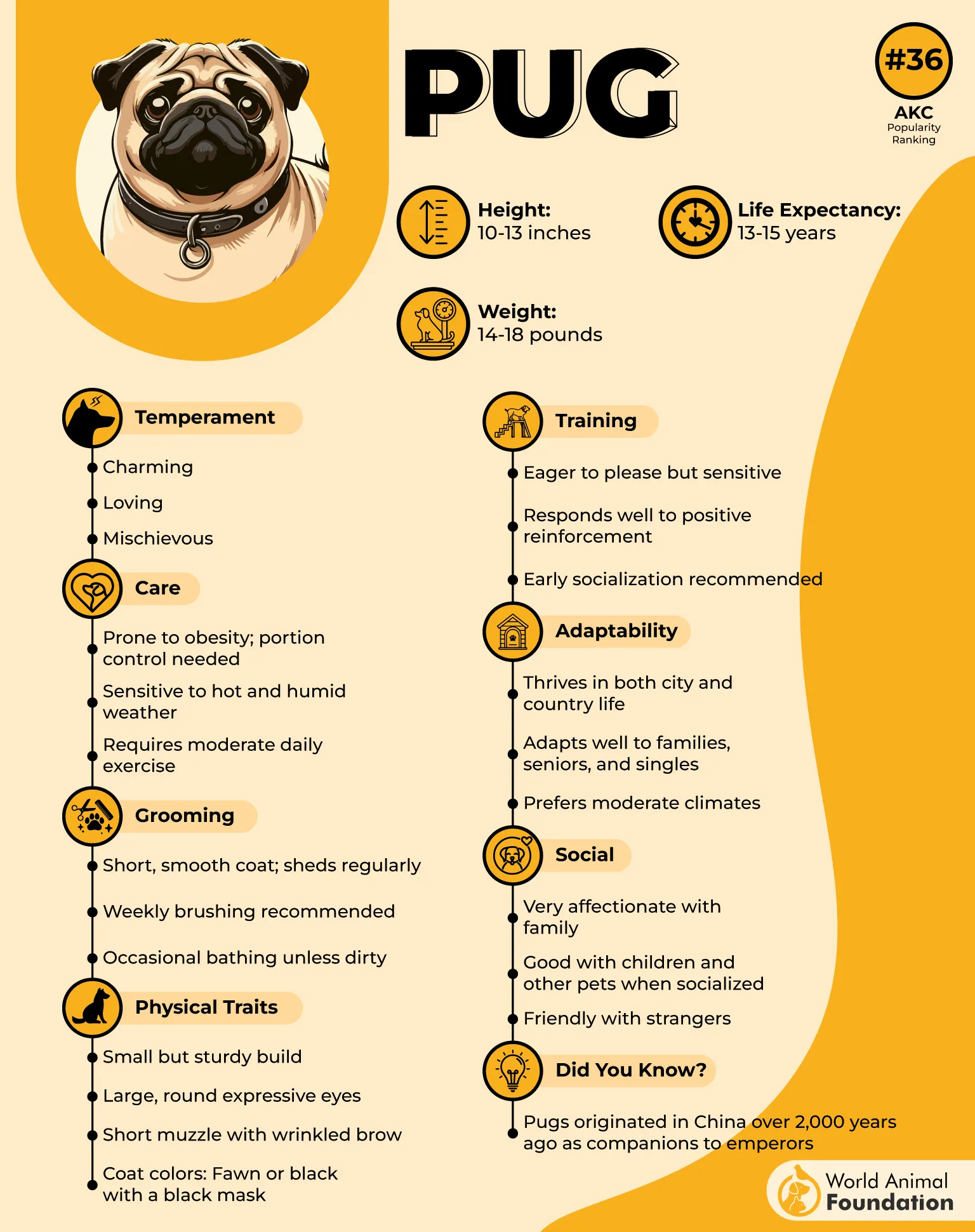WorldAnimalFoundation.org is reader-supported. When you buy through links on our site, we may earn an affiliate commission. Learn More
Put your hand on a calm dog’s side and feel their steady heartbeat…
There’s something about that rhythm that brings our own racing hearts back to normal. Scientists call it “entrainment” – when our bodies sync with the calmer presence beside us.
This is just one reason why therapy dogs are so effective at helping people through anxiety, depression, PTSD, and even physical recovery. These canine healers don’t just look cute – they’re working a kind of magic that modern medicine is only beginning to understand.
The best therapy dogs have a special blend of traits: they’re people-oriented but not needy, friendly but not hyper, adaptable but not easily frazzled. While any dog with the right personality can become a therapy dog, certain breeds are known for having that perfect therapy temperament.
The seven breeds we’re about to meet are the champions of therapeutic chill. Let’s start!
Chill Therapy Dog Breeds
1. Newfoundland
Newfoundlands, often called Newfies, are among the calmest and most loving companions. Their size might be large, but their hearts are even bigger, making them gentle giants in every sense. With a temperament that’s sweet and friendly, they easily earn a spot among the best calm dog breeds for emotional support. It’s this reliable, affectionate nature that makes them stand out in therapeutic roles.
They’re often referred to as “nanny dogs” because of how well they bond with children. A Newfoundland’s ability to stay composed in a bustling household makes it one of those great therapy dogs that families truly value. Even with their size, they have an easygoing attitude that helps create a peaceful space.
Newfies are naturally sociable and do well around just about any dog, even smaller ones that may seem intimidated by their size. That said, it’s important to guide their interactions with toddlers, as their sheer weight can easily cause an accidental topple, as per PetMD. Still, their consistent calmness helps ease tension in just about any setting, whether indoors or out.
Exercise for Newfies should be consistent but gentle, with activities like swimming or hiking offering both fun and mental stimulation. They don’t demand much, but they do appreciate daily movement to stay in good shape. You’ll often find them enjoying a slow walk or lounging in the shade, perfectly content with life’s quiet moments.
Known for their loyalty and patience, Newfoundlands make a deep emotional connection with the people around them. Whether it’s offering a comforting presence after a tough day or simply lying by your side, they bring a quiet stability that’s hard to match. Their relaxed energy and intuitive understanding make them a true gift in therapeutic settings.
2. Cavalier King Charles Spaniel
Cavalier King Charles Spaniels carry an effortless charm that makes them a favorite among therapy dog breeds. With their soft expressions and calm energy, they bring comfort just by being present. Known for their ability to stay relaxed even in new surroundings, they’re a perfect fit for animal-assisted therapy in hospitals, schools, or even busy households.
One of their biggest strengths lies in their gentle temperament, which allows them to connect with people of all ages. Whether they’re curled up next to an elderly patient or keeping a child company during a stressful day, Cavaliers know how to be there without being overwhelming. Their affectionate nature makes them natural companions for those dealing with anxiety or depression.
Being one of the most adaptable small dogs, Cavaliers bring the soothing benefits of a therapy pet without the space concerns of larger breeds. They’re light enough to sit on laps during sessions and calm enough to stay focused even with background distractions. Whether it’s a care home or college dorm, their presence never feels out of place.
They’re also incredibly social and get along well with other dogs, which adds to their flexibility in group settings. You’ll rarely see them show aggression or dominance; they’d rather lean into affection than confrontation. Even in multi-pet homes, they tend to keep the peace and encourage friendly interactions.
What makes Cavaliers truly special is how they offer emotional support without needing much in return. They don’t ask for intense exercise or constant attention—just a bit of love and space to rest. For those looking for balanced small dogs with a healing presence, this breed makes calm companionship look effortless.
3. Pug
Pugs may be small in size, but they’re incredibly capable when it comes to supporting emotional needs. Their intuitive nature and steady temperament allow them to assist individuals with psychiatric and intellectual disabilities. While they aren’t built for mobility tasks, they can manage retrieval cues and offer steady companionship. Their sensitivity to mood shifts makes them a natural fit for therapy roles.
They’re known for being alert and eager learners, especially when positive reinforcement is part of the routine. Their willingness to participate in training allows them to perform grounding tasks like tactile stimulation or light-pressure comfort. It’s this focus and responsiveness that helps them stay well-behaved in more structured settings.
Because of their compact size, Pugs adjust easily to daily routines, public places, and indoor environments. They thrive in apartments, fit comfortably in laps, and even meet travel requirements when needed. As lap dogs, they provide a consistent source of comfort through simple touch and closeness.
With their affectionate energy and friendly disposition, Pugs offer a comforting presence in both calm and stressful moments. According to the experts at Pettable, their body warmth is often used in deep pressure therapy to ease anxiety symptoms. They also provide tactile grounding through cuddles and paw nudges, which are soothing without being overwhelming
Their playful nature brings lightness into heavy days, and they often form strong bonds with the people they care for most. Beyond emotional grounding, they’re naturally attentive and make solid alert companions. Pugs can be trained to recognize intruders or react to cues signaling distress. That mix of loyalty and alertness helps them stand strong in their therapy roles.
4. Greyhound
Greyhounds bring a peaceful presence that works well in therapy environments. Their gentle energy makes them well-suited for homes with seniors or those needing emotional support. They’re especially in tune with moods, quietly responding to distress with steady companionship. That sensitivity makes them a reliable source of comfort through hard days.
They’ve often been labeled as racing dogs, but off the track, their personalities are far more serene than people expect. Greyhounds enjoy lounging, prefer a quiet space, and are often content with minimal activity. That calm energy, paired with their size, makes them a natural fit for mobility assistance. Add a winter coat in colder seasons, and they’re ready for year-round care work.
What sets them apart is how they pick up on unspoken cues and energy shifts. This emotional awareness helps them connect with individuals dealing with anxiety, trauma, or depression. Their calmness around children gives them a unique edge in homes where stability is key. With their loyalty and light footprint, they offer support without demanding attention.
Though each one has its own individual temperament, Greyhounds generally lean toward the mellow side. They’re not high-strung, and they handle public outings and social settings with quiet ease, as stated in CertaPet. They often bond deeply with their person, becoming emotionally intuitive companions. Even in busy environments, they hold steady and collected.
Their good-natured spirit allows them to work well in groups and connect with strangers or new faces. They usually get along well with other canines, though their natural prey instinct might not mix with smaller animals. Still, their eagerness to please and solid response to training make them highly capable service companions. With the right guidance, they quietly excel.
5. Saint Bernard
Saint Bernards are one of those larger dogs that feel more like a big warm blanket than a high-energy pet. With their mellow vibe and deep affection for people, they naturally settle into relaxed home environments. Their history as rescue dogs speaks to their loyal and caregiving instincts. Today, that same devotion translates beautifully into emotional support roles.
Bernards are easygoing and tuned in to people’s emotions, which makes them strong candidates as service dogs for psychiatric needs. Their ability to bring smiles without even trying is part of their quiet charm. As per Service Dog Training School, they like being involved and staying close, making separation a challenge for them. Still, their comforting presence helps keep the atmosphere light.
You’ll often find them sprawled across the floor, snoring gently with a toy nearby. Their friendly nature draws everyone in, and their calmness helps regulate the mood in a room. While they do need light daily movement, they won’t ask for much beyond your company. Just be prepared for the drool—they’re generous with that too.
They don’t do well when isolated, but place them in a home full of love and they’ll thrive. Bernies read a room without needing commands and offer a grounding energy that can’t be taught. Their empathy makes them excellent companions for those living with emotional challenges. Just one glance and they seem to know how you’re feeling.
Early training helps channel their energy in the right direction and avoids the hurdles of managing their size. Still, they’re naturally cooperative and respond well when included in the family’s rhythm. Some Saint Bernards also work as service dogs in mobility roles, offering both emotional support and physical help. With their steady pace and soft hearts, they do both with ease.
6. French Bulldog
French Bulldogs may not tower in size, but they bring a big presence when it comes to emotional support. Their compact build makes them easy to carry and accommodate in daily life, especially for people needing close companionship. These dogs naturally tune into their humans, picking up on moods and responding with calm affection.
Training a Frenchie is usually met with eager eyes and wagging tails—especially if treats are involved. They’re playful, curious, and highly trainable, learning best in short bursts with plenty of positive reinforcement. That balance of smarts and sweetness makes them ideal for psychiatric service roles. And they tend to remember emotional cues just as well as commands.
When it comes to comfort, few things beat a Frenchie leaning in for snuggles with those round, soulful eyes looking up at you. Their natural way of providing tactile stimulation—through cuddles, gentle pawing, or soft nudges—can help ground someone during emotional distress. They were bred to be companions, and it shows in how they always want to be near.
They’re also surprisingly alert and observant, which helps in danger or intruder notification. A French Bulldog may not look like a bodyguard, but their bark carries weight when they sense something’s off. That mix of vigilance and affection offers both practical and emotional reassurance. With consistency, they can support their owners in public and private spaces with ease.
Deep pressure therapy is another area where Frenchies excel, calmly applying their weight to soothe anxiety or panic. Their mellow vibe and constant desire to connect make them well-suited for this calming support. They adapt anywhere, in small flats, big homes, or on road trips, and make life better wherever they go.
7. Irish Wolfhound
Irish Wolfhounds carry a quiet strength that commands attention without ever being loud. Their towering presence alone can spark engagement, especially in settings where motivation is hard to find. In hospitals, their height allows for easy interaction with beds or wheelchairs. They meet people eye to eye, creating instant, calm connections.
Therapists and handlers have witnessed how teens recovering from surgery will eagerly rise just to walk beside them. Their gentle stride brings both comfort and reassurance with every step. For patients feeling fragile, that simple act of walking gains new weight. It’s no longer therapy—it becomes a partnership in motion.
The 2013 Irish Wolfhound Association event showed how impactful their presence could be. Handlers shared stories of confidence and self-worth developing through basic interactions. A child giving simple cues to a giant hound sees those commands come to life. That success, magnified by the dog’s size, becomes something deeply empowering.
Adults, too, respond to their grace and grounding effect, often seeing themselves reflected in the breed’s strength. For patients who resist vulnerability, bonding with such a dignified companion changes everything. One comment—“That’s MY therapy dog!”—echoes how deeply personal the connection becomes. These dogs aren’t just supportive; they help reshape self-image.
In therapy rooms and long hallways, Irish Wolfhounds don’t need tricks to make an impact. Their calm energy, silent understanding, and patient nature speak louder than any command. They bring presence where it’s needed and give people the quiet space to feel seen. With them, healing often starts without a word.
Conclusion
These seven breeds show us that therapy work isn’t just about training—it’s about finding dogs with natural healing spirits. When these calm companions connect with humans in need, something magical happens that medicine alone can’t provide.
Active pet parents know that choosing the right therapy dog means matching their energy to their lifestyle. Even the calmest breeds need proper engagement, consistent routines, and plenty of affection to thrive. Your commitment to their well-being directly impacts how effectively they can support others.
Most of these breeds need only moderate exercise to stay healthy and content. A daily walk, some playtime, and mental stimulation are usually enough to keep these naturally even-tempered dogs balanced. Their laid-back nature makes them adaptable to different living situations and family dynamics.
To give these special companions their best life, remember they need more than just a professional purpose. They need time to just be dogs—to sniff interesting smells, feel the sun on their fur, and enjoy simple pleasures. Like us, they need a balance between working and simply living.
The time you spend building your bond becomes the foundation for all the healing they can offer. Whether they’re formally certified or simply your emotional support at home, these breeds remind us of a simple truth. Sometimes the most powerful medicine comes with four paws and an open heart.
